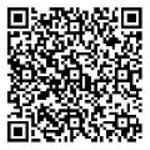The Effects of Family Resources, Learning Attitudes and Class Interaction on Academic Performances by Using Structure Equation Modeling
Author: Chia-Chun Hsiao(Graduate Institute of Educational Entrepreneurship and Management, National University of Tainan),Yuk-Ying Tung(Institute of Education, National Cheng-Kung University) Meng-Shya Rau(Institute of Education, National Cheng-Kung University)
Vol.&No.:Vol. 54, No. 2
Date:June 2009
Pages:135-162
DOI:10.3966/2073753X2009065402006
Abstract:
The purpose of this study was to find out the relationships among family resources, learning attitudes, class interaction, and academic performances. Sample, including 3,214 freshmen of junior high school students, was drawn from Surveys of Taiwan Education Panel Survey in 2001. According to the results of previous empirical research, the study tried to build up a causal model of family resources as an exogenous variable and academic performances as an endogenous variable. Moreover, in the model, the impact of class interaction and learning attitudes also played a role of mediated variables. The findings of the study showed that students who had more family resources were more likely to have higher learning attitudes, but lower academic performances. Additionally, there were inverse relationships between class interaction and academic performances. Learning attitudes also directly influenced the situation of class interaction and academic performances. Finally, class interaction had mediated effects on the relationships among family resources, learning attitudes, and academic performances. This study also proposed some relevant suggestions.
Keywords:family resources, TEPS, academic performances
 《Full Text》
《Full Text》
